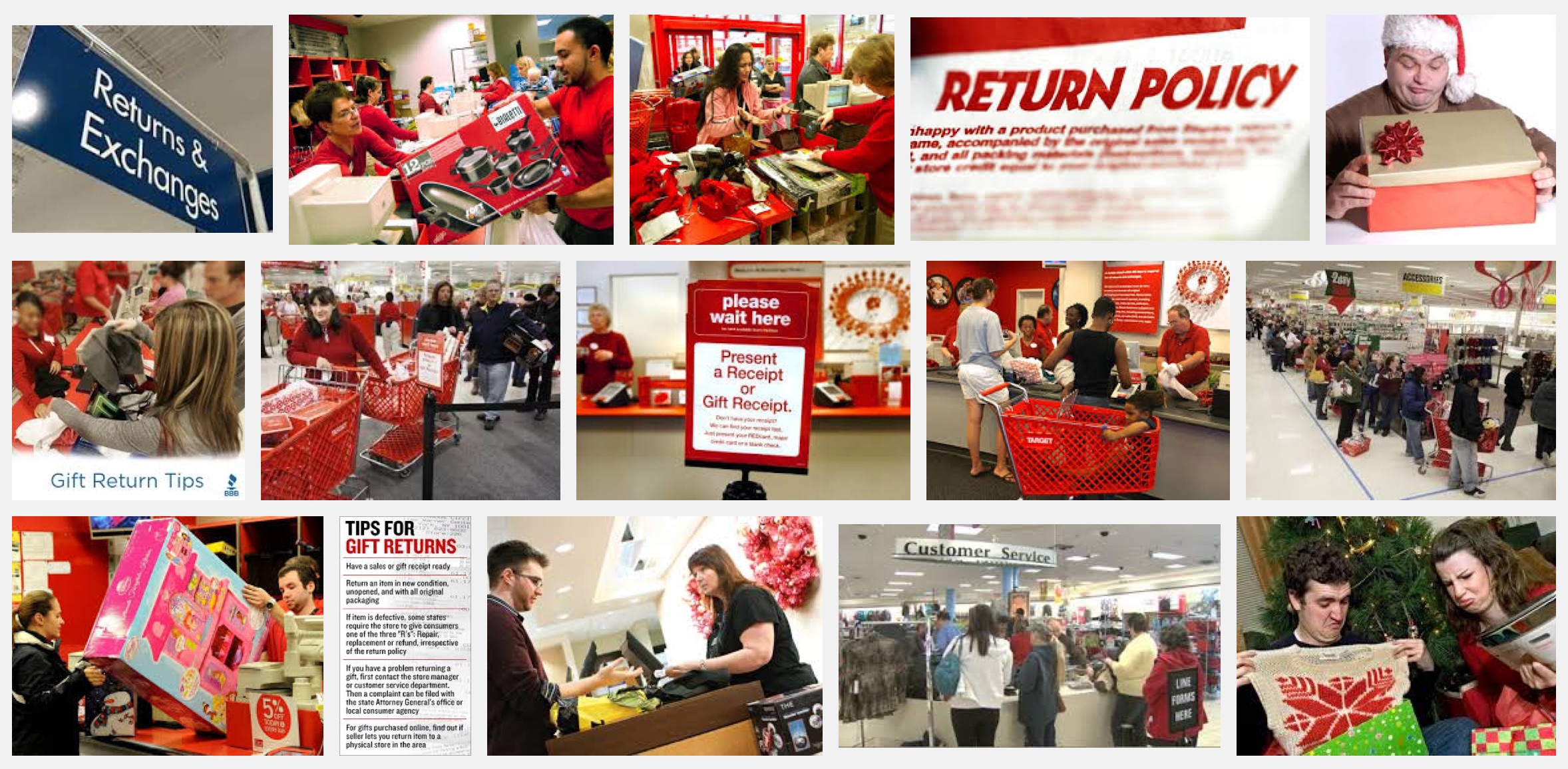
Call it what you may, but ’tis the season following the gift-giving season, which means only one thing, it’s returns season. Did you receive a gorgeous pair of shoes in the wrong size? Return. Did you get yet another hideous tie or shirt in the wrong color? Return. Yet more lotion that makes you break out in an orange rash? Return? Video game in the wrong format or book that you already digested last year? Return. Toaster that doesn’t match your kitchen decor? Return.
And, the numbers of returns are quite staggering. According to Optoro — a research firm that helps major retailers process and resell returns — consumers return nearly $70 billion worth of purchases during the holiday season. That’s more than the entire GDP of countries like Luxembourg or Sri Lanka.
So, with returns being such a huge industry how does the process work? Importantly, a returned gift is highly unlikely to end up back on the original shelf from where it was purchased. Rather, the gift is often transported by an inverse supply-chain — known as reverse logistics — from the consumer back to the retailer, sometimes back to a wholesaler, and then back to a liquidator. Importantly, up to 40 percent of returns don’t even make it back to a liquidator since it’s sometimes more economical for the retailer to discard the item.
From Wired:
For most retailers, the weeks leading up to Christmas are a frenzied crescendo of activity. But for Michael Ringelsten, the excitement starts after the holidays.
Ringelsten runs Shorewood Liquidators, which collects all those post-holiday returns—from unwanted gadgets and exercise equipment to office furniture and popcorn machines—and finds them a new home. Wait, what? A new home? Yep. Rejected gifts and returned goods don’t go back on the shelves from which they came. They follow an entirely different logistical path, a weird mirror image of the supply chain that brings the goods we actually want to our doors.
This parallel process exists because the cost of restocking and reselling returned items often exceeds the value of those items. To cut their losses, online retailers often turn to folks like Ringelsten.
I discovered Shorewood Liquidators through a rather low rent-looking online ad touting returned items from The Home Depot, Amazon, Sears, Wal-Mart, and other big retailers. I was surprised to find the items weren’t bad. Some were an out-and-out deal, like this comfy Arcadia recliner (perfect for my next Shark Tank marathon). Bidding starts at 99 cents for knickknacks or $5 for nicer stuff. The descriptions state whether there are scuffs, scratches, or missing parts.
“This recliner? It will definitely sell,” Ringelsten says. Shorewood employs 91 people who work out of a 100,000-square-foot warehouse in Illinois—a space that, after the holidays, is a Through the Looking Glass version of Amazon, selling unwanted gifts at rock-bottom prices. And as Americans buy more and more holiday gifts online, they’re also returning more, creating new opportunities for businesses prepared to handle what others don’t want. Call it “re-commerce.”
The Hidden World of Returns
UPS says last week it saw the highest volume of returns it expects to see all year, with people sending back more than 5 million gifts and impulse purchases. On the busiest day of that week, the shipper said, people sent back twice as many packages—1 million in all—than the same day a year ago.
But those returns often don’t return from whence they came. Instead, they’re shipped to returns facilities—some operated by retailers, others that serve as hubs for many sellers. Once there, the goods are collected, processed, and often resold by third-party contractors, including wholesalers and liquidators like Shorewood. These contractors often use software that determines the most profitable path, be it selling them to consumers online, selling them in lots to wholesale buyers, or simply recycling them. If none of these options is profitable, the item may well end up in a landfill, making the business of returns an environmental issue, as well.
Read the entire story here.
Image courtesy of Google Search.

 Soon courtesy of Amazon, Google and other retail giants, and of course lubricated by the likes of the ubiquitous UPS and Fedex trucks, you may be able to dispense with the weekly or even daily trip to the grocery store. Amazon is expanding a trial of its same-day grocery delivery service, and others are following suit in select local and regional tests.
Soon courtesy of Amazon, Google and other retail giants, and of course lubricated by the likes of the ubiquitous UPS and Fedex trucks, you may be able to dispense with the weekly or even daily trip to the grocery store. Amazon is expanding a trial of its same-day grocery delivery service, and others are following suit in select local and regional tests.